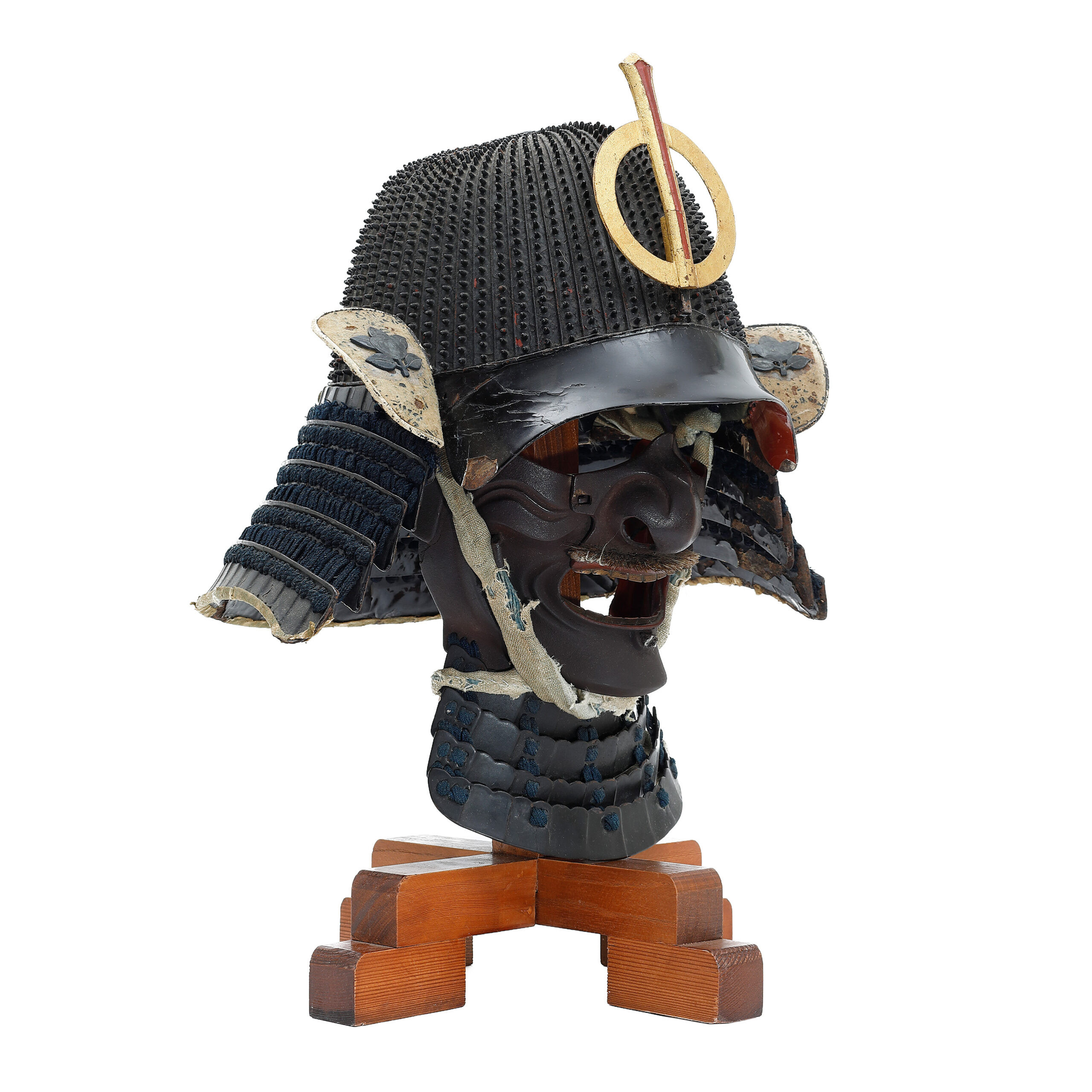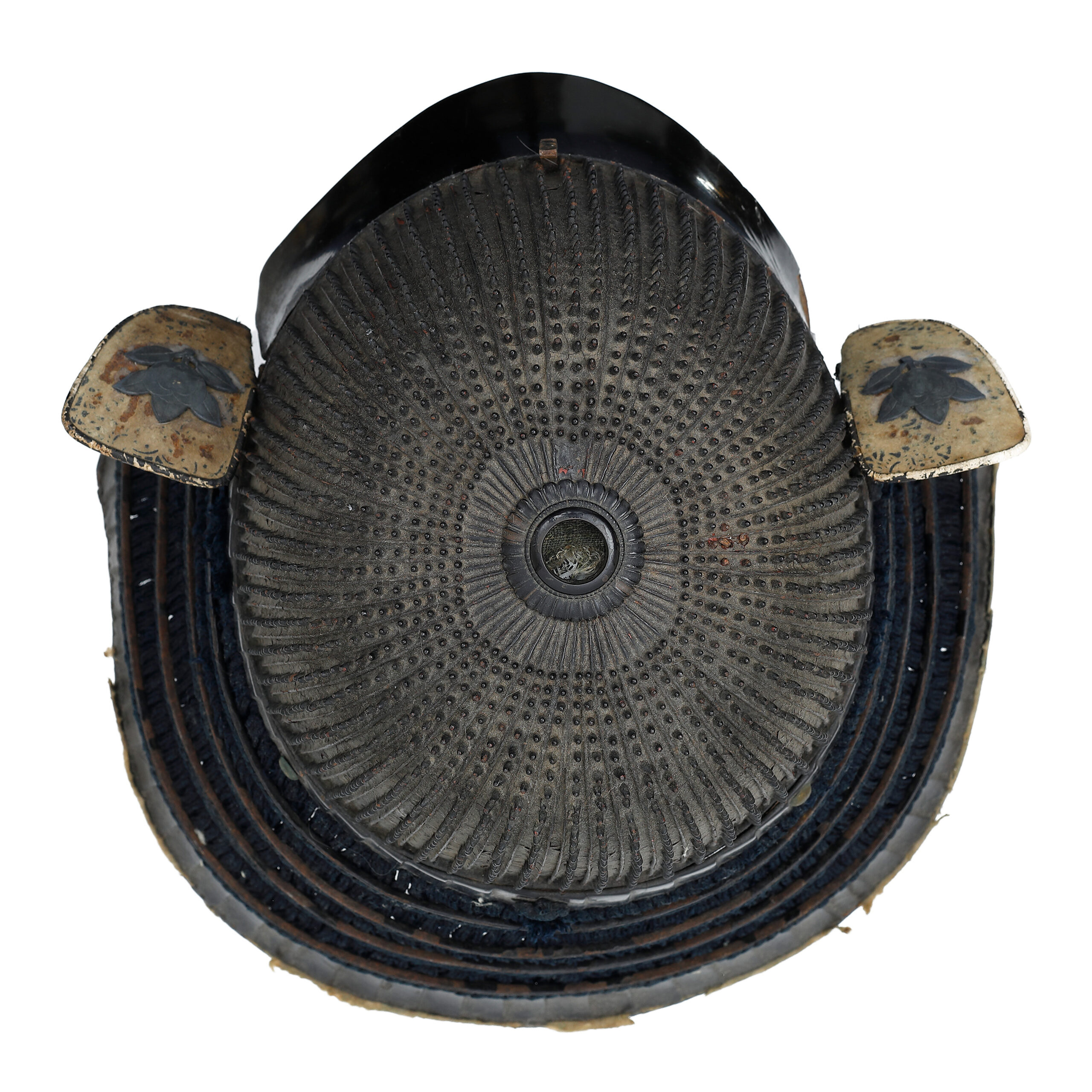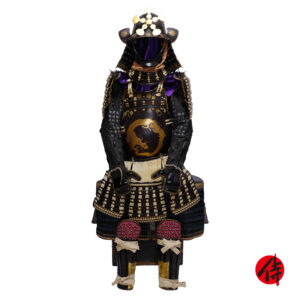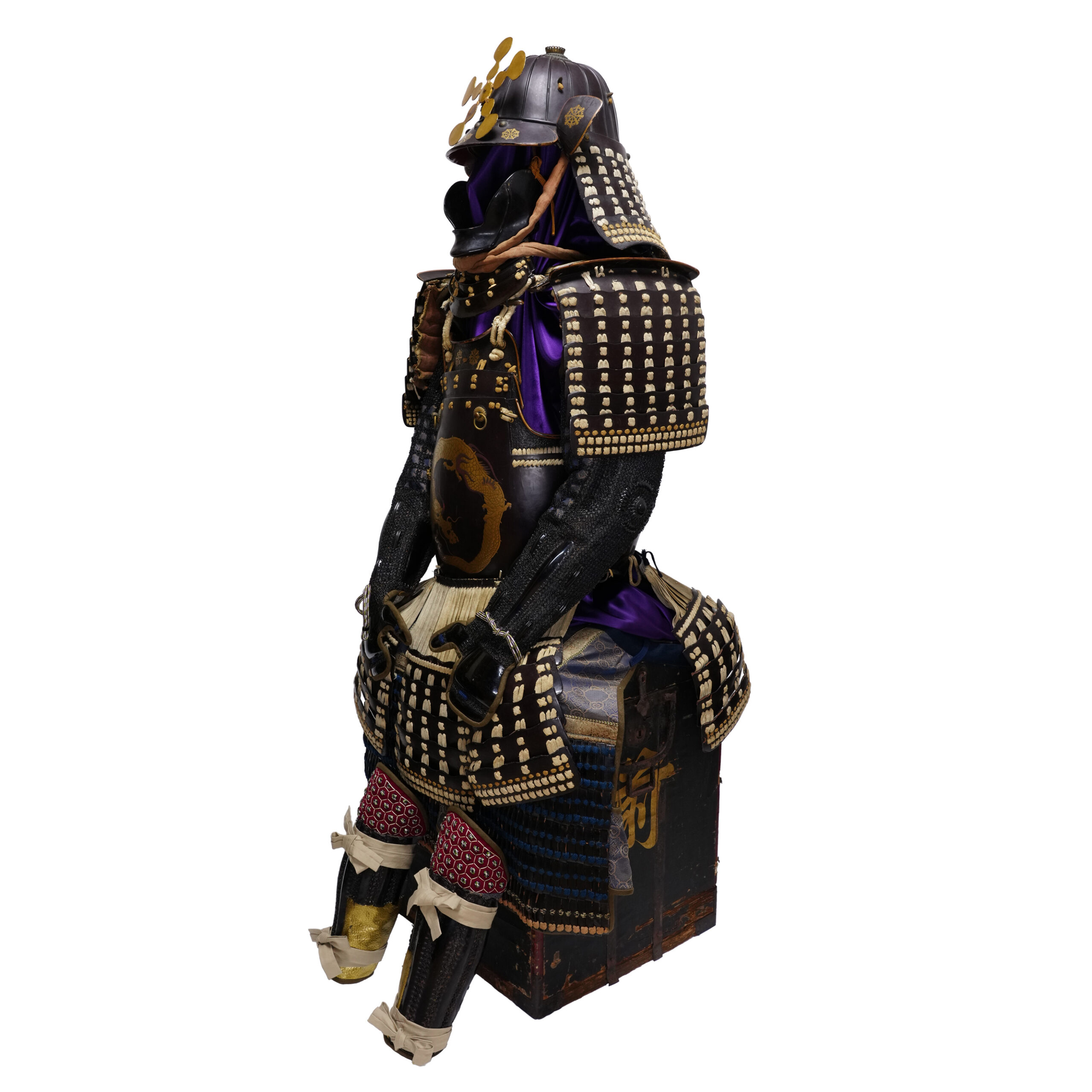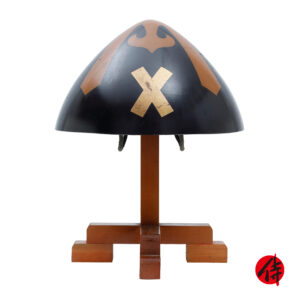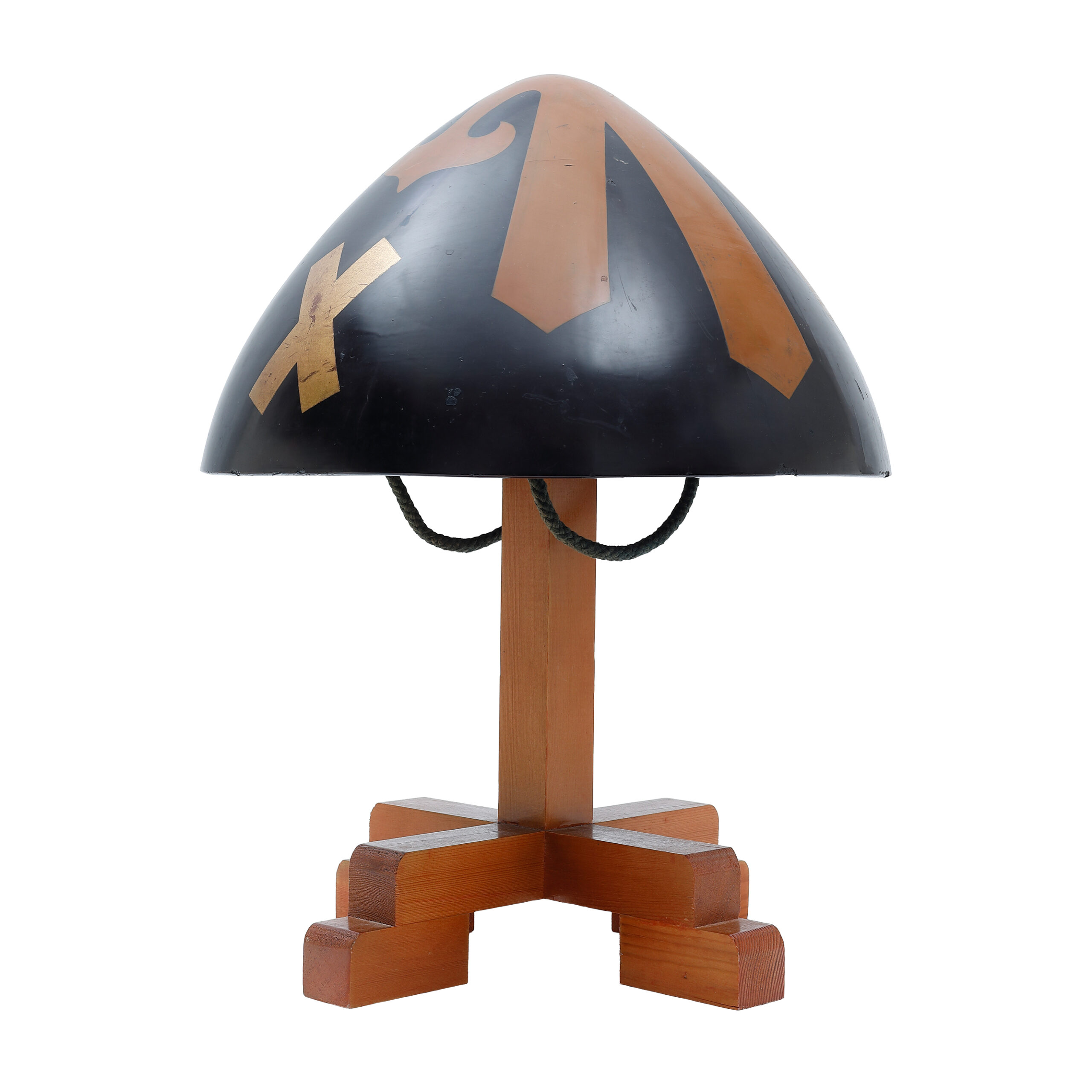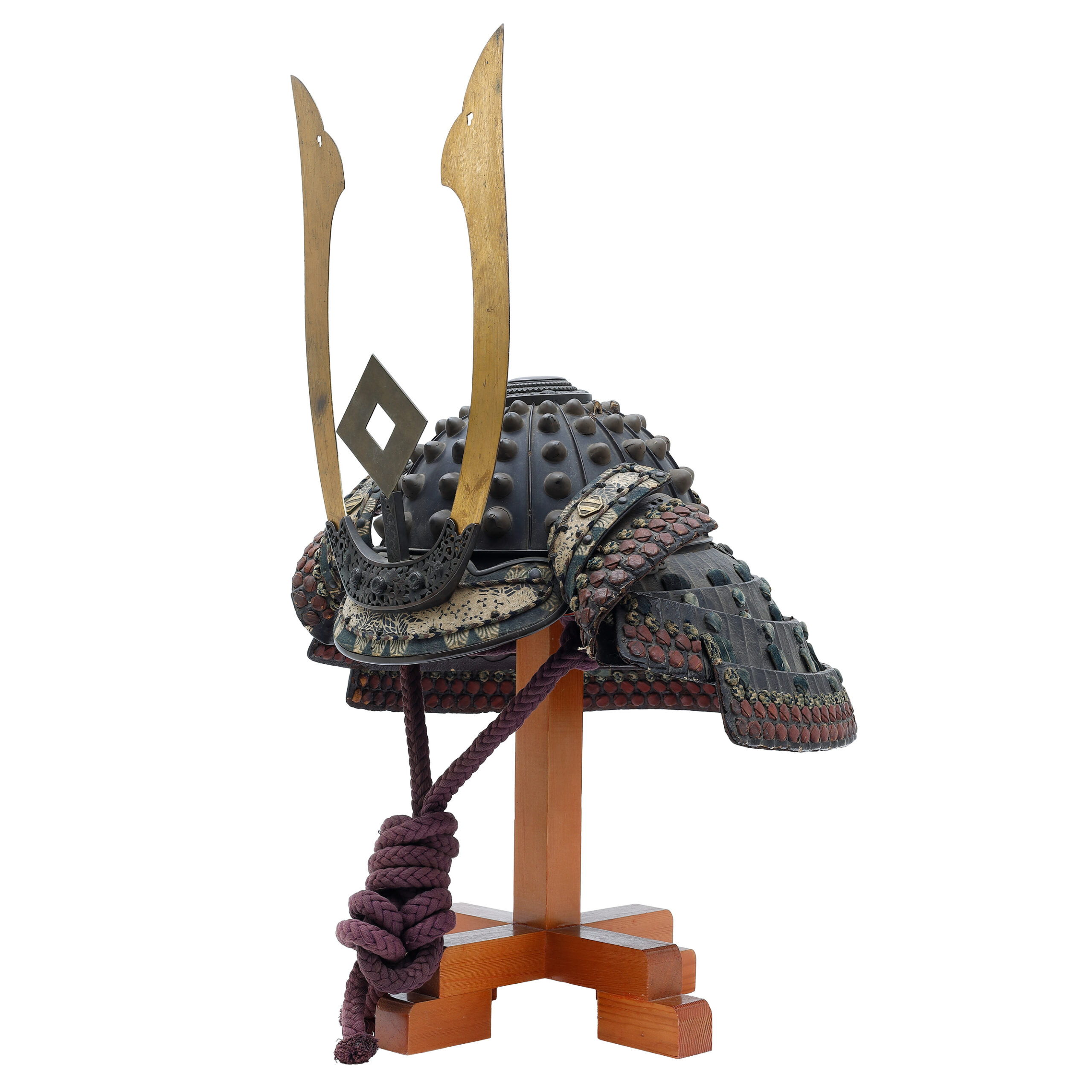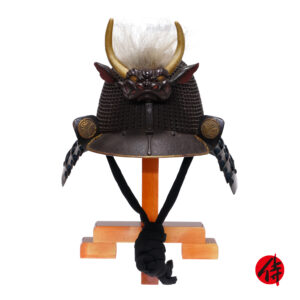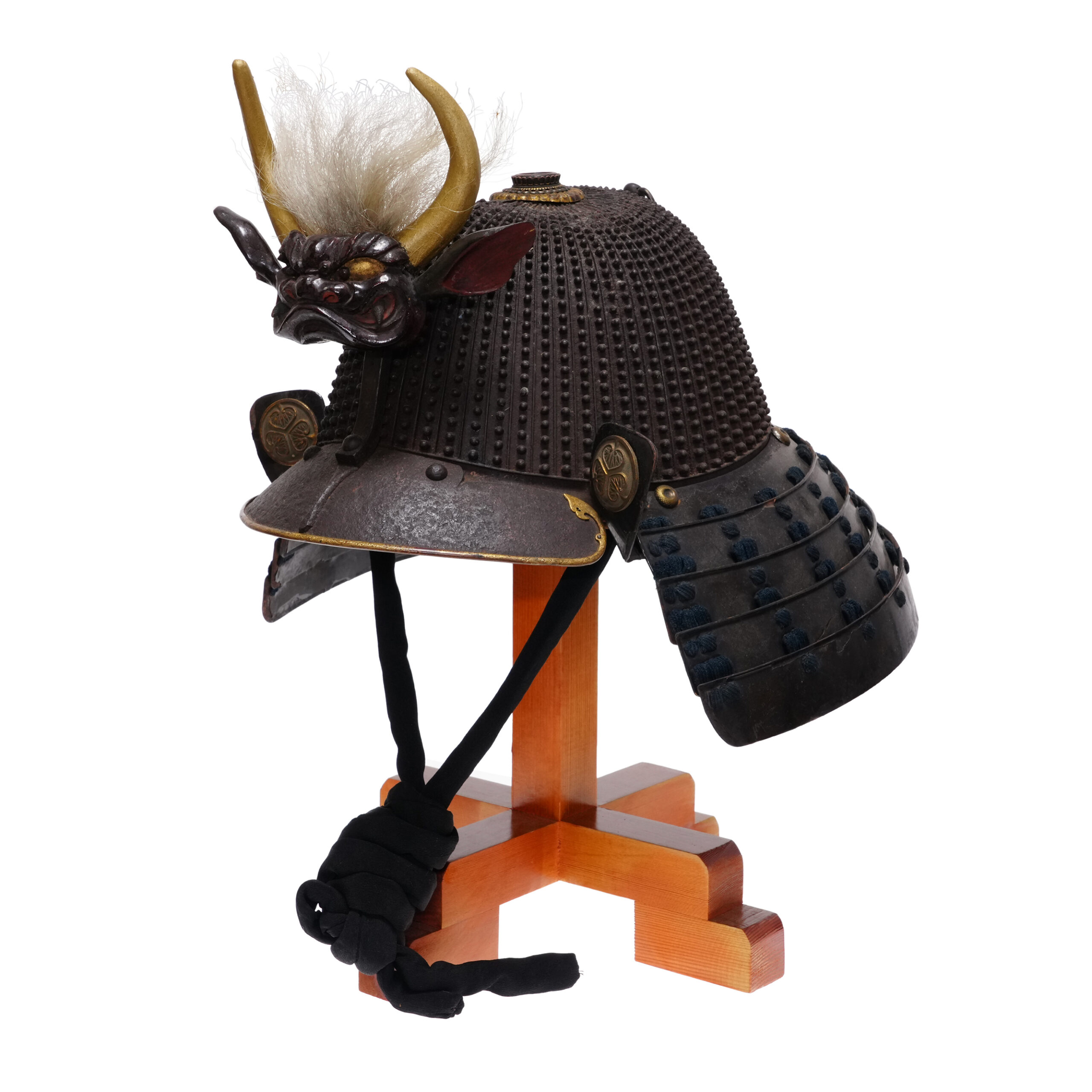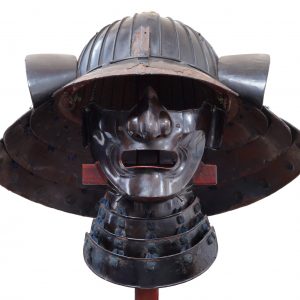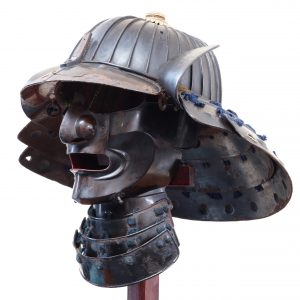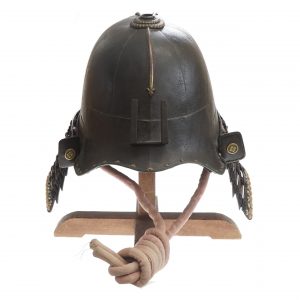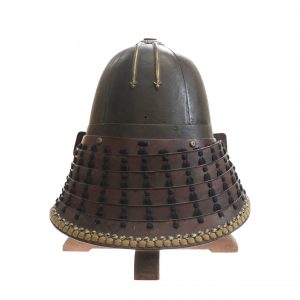Antique Samurai Helmet Rokujuni Ken Koboshi Kabuto with Tokubetsu Kicho Shiryo Certificate

Period: Early Edo Period (appraised by The Association for the Research and Preservation of Japanese Helmets and Armor)
Prime Material: Iron
This Kabuto’s style is the Koboshi Kabuto (小星兜), which is categorized as the Hoshi Kabuto (星兜), and it has Rokujuni (sixty two in Japanese) iron plates. The Hoshi Kabuto is a type of Samurai helmet that was born in the middle of the Heian period (around 888-1068). Small rivets that hold iron plates together. These rivets are called the Hoshi (星, star). In the Edo period, artisans made Kabutos not only Kawari Kabutos (please check the paragraph below) but also ancient-style Kabutos. For example, in the case of the Hoshi Kabuto, the Hoshis become smaller toward the top of the head; this form is called the Rinotori (厘劣り). It differs from the old-fashioned Hoshi Kabuto, in which all the Hoshis were the same size.
The Kabuto is a protector of the head. When people started using the Kabuto, it was initially designed for practical use. However, the principal purpose of its design has changed with time; Samurai warriors tried to express their dignity, personality, or religion by wearing the characteristic designed Kabutos. According to a theory, these uniquely designed Kabutos were made from the late Muromachi (室町, 1336-1573) to the Edo period (江戸, 1603-1868). This type of Kabuto is categorized as the Kawari Kabuto (変わり兜), and a variety of materials were used to create them. For example, animal fur, seashells, plants, and paper were used as materials for decorations.




The Maedatemono (前立物, front decoration) is attached to this helmet. We think it is the combination of the Nichirin (日輪, another name for the sun). There was a widespread belief among Samurais; the Myouken (妙見) belief. This religion was born in India. It was mixed with the Polestar belief and was brought to Japan from the Continent. The sun, the moon, and the stars of the entire universe were the symbols of faith. The Myouken Bosatsu (妙見菩薩, 菩薩 means Bodhisattva) fulfills all wishes such as fertility of rich harvest, peace, the prosperity of the clan, healing of illness, longevity, success in business, traffic safety, academic achievement, marriage, etcetera. So, it is understandable that the sun motif was appreciated among Samurais. The former owner of this armor might have had shown his faith wearing this helmet.
Uesugi Kenshin (上杉 謙信, 1530-1578), a famous feudal Daimyo (大名, a Japanese feudal lord), who ruled the Hokuriku (北陸) area also liked this design. He fought in lots of battles and won victory in most of them. Therefore, he was called the Gunshin (軍神, god of war). His helmet had the front decoration, and its motif was the combination of the Nichirin and the crescent moon. A theory says he believed the Myouken belief and especially worshipped the sun and the moon. By combining the Nichirin and a sword, this Metate’s designer might have tried to show his faith and determination to be successful on battlefields.
Also, the Fukikaeshi (吹き返し), both ends of a Kabuto, is attached to this Kabuto. It protects the face from swords and also shows its beautiful workmanship. Family crests are sometimes designed on this part, as seen on this Kabuto. This crest is called the Tachibana (橘). The Tachibana is a descendant of mandarin oranges. It has a strong aroma, and is resistant to snow damage, and grows well. Because of these characteristics, there is an anecdote that a person of good character and dignity was compared to being “like a Tachibana.” The custom of displaying peach blossoms and Tachibanas during the Momo-no Sekku (桃の節句, the Girl’s Festival, March 3rd) to this day. According to a theory, Tachibana came to be used as a motif of family crests because it was a prized plant. It is said that the ripened Tachibana fruits remain on the branches and emit their fragrance for an extended period, up to six months. In addition, evergreen trees have been regarded as lucky charms since ancient times, as they have the characteristic of not changing the color of leaves or falling and are associated with the idea “Tsunenaru Mono (常なるもの, eternal and unchanging).”

This Kabuto is a set with this Menpo (面頬, face guard). This type of Menpo is called the Ressei Menpo (烈勢面頬). It represents the angry face to intimidate enemies. There are many types of Menpo, depending on their shape or appearance. The purpose of Menpo was not only to protect Samurai’s face. But also to hide their true faces so that their psychological states were unaffected. Beards are attached to this Menpo. Thanks to this effect, even a young soldier would have been able to produce the majestic appearance of a middle-aged Samurai.

*Please keep in mind that this Kabuto’s lacquer is partly lacked off.
Certification: Tokugetsu Kicho Shiryo Certificate
The certificate was issued by The Association for the Research and Preservation of Japanese Helmets and Armor, which is the most trusted Japanese armor appraiser in Japan. Tokubetsu Kicho Shiryo means special rare article. It is ranked as the third highest of five rankings.
This helmet was authenticated on May 26th, 2024, as a Tokubetsu Kicho Shiryo, and this paper mentions that this item was made in the early Edo period.
An English translation of the certificate is available on request. We won’t charge any additional fee.
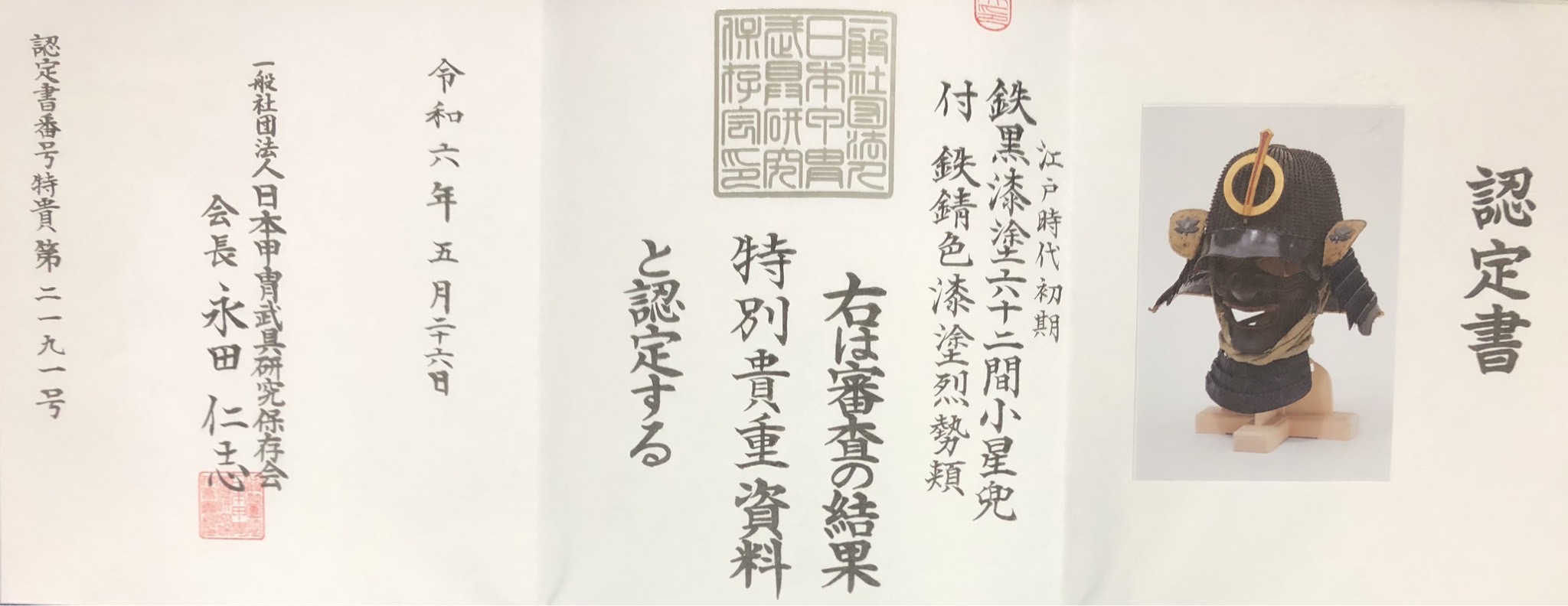
【About us】
Samurai Museum is located in Tokyo, Japan, exhibiting antique artifacts related to the Samurai history. Samurai Museum Shop is the place for those who are interested in Japanese culture and craftsmanship. We deal with antique Samurai swords/armor, traditional crafts made in Japan and so on.
【Antique Japanese helmet (Kabuto) and Export process】
After receiving the full payment from you, we will apply for its export permit from the Board of Education to legally export the helmet to other countries. It normally takes around 2-4 weeks to receive this permit. And we would like you to expect at least 1.0-1.5 months for your order to arrive at your given address after you ordered.
【Payment Method】
We accept payment through Stripe (Credit card), PayPal, Apple Pay or ChromePay, all of which are secure payment methods. Also, you don’t need to make an account on Stripe for the checkout. If you prefer other payment method, please contact us. After confirming your payment, we will apply for an export permit. You may either pay in JPY, USD, AUD, CAD, EUR, CHF or GBP. The price is set in Japanese Yen. Prices in other currencies are automatically calculated based on the latest exchange rate.

【Shipping Duration】
We normally ship via EMS (Express Mail Service) provided by Japan Post. It usually takes at least 5-14 days to deliver the package after you place an order.
We offer Free International Shipping as long as we can ship your order by EMS. If you prefer other shipping carriers, please contact us.
We will inform you of the order’s tracking number via email. Please make sure you fill out your valid email address correctly.
*If you like to make sure if EMS shipping is available to your country, please contact us.

【How to make sure the condition】
Please keep in mind that what you are going to purchase is an antique item. We uploaded high resolution photos for you to check its condition thoroughly. If you like to see more photos with different angles, please feel free to contact us. We will be happy to send them to you so that you can make informed decision. It is essential for us to know that you are happy with your choice of a sword. and we are prepared to use the best of our ability to serve you.
【How To Contact Us】
Please contact us through email, Facebook Messenger or Live Chat if you have any questions. You can find each icon on the right side of the website. Please click one of them to reach us. We will reply to you within 1-2 business days.
【How To Preserve Antique Samurai Armor/Helmets】
Dryness, humidity, and bad ventilation might deteriorate the condition of antique Samurai armor/helmet. The best temperature to preserve Samurai armor/helmet is around 20℃ in Celsius, and humidity should be about 60%. Direct sunlight should be avoided. We recommend storing armors/helmets in a room with good ventilation. If you like to display them outside the boxes for a prolonged time, we suggest using a glass case in order for dust not to be accumulated easily. In case you don’t use a glass case, please make sure to regularly dust off from the armor/helmets by using a soft brush made of delicate cloth or brush for painting.
If you like to know more about the preservation of this armor, please feel free to contact us.

